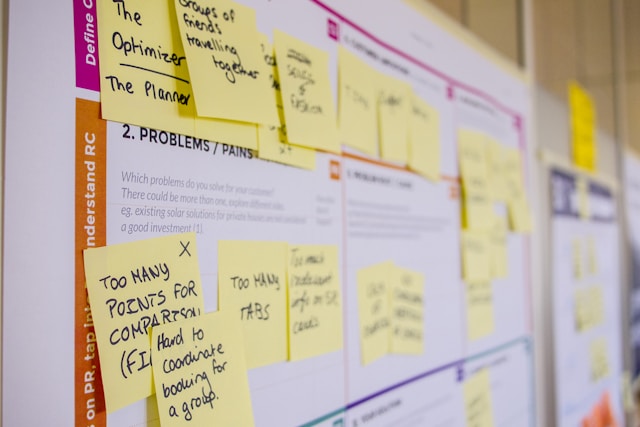In 2023 procurement will revert back to competitive tendering. Are you prepared?
The past two years saw challenges with supply chain disruptions, inflation, and shortages leading to increased costs and decreased availability of goods.
As a result departments delayed going to market and instead opted to negotiate with existing suppliers as the opportunities for switching were low and the risk too high.
In 2023, however, cost reduction targets require procurement departments to revert back to tendering. The reason is simple! There is a perception in the market that competitive tenders will help the cost saving targets.
Sales organizations need to prepare by mapping agreements ending in the next 12 months, maintaining regular contact with customers, and identifying potential new customers that may go to market.
To succeed in a competitive RFQ or tender, consider these 8 key elements for an advantage.
1. Avoid the tender, if you can’t, influence it
In the field of procurement and sales, it has long been established that tenders are often inefficient and costly processes for all parties involved. Despite this, procurement departments still regularly resort to tenders as a means of reducing costs. However, this approach is misguided, as the costs of change and associated risks frequently result in suboptimal contracts, and the anticipated savings are rarely realized.
A better approach is to foster strong relationships with procurement counterparts and engage in collaborative negotiations aimed at optimizing value for both parties. This strategy not only improves outcomes for all involved, but also increases the likelihood of avoiding a tender altogether.
To achieve this outcome, sales departments must maintain a negotiation agenda, keeping track of when their agreements are expiring or when their competitors’ agreements are set to end. As tenders typically require a significant amount of preparation time, this information serves as an indicator for when procurement will begin considering options for when the existing agreement expires. By reaching out and initiating discussions about potential extensions and optimization strategies during this time, the likelihood of avoiding a tender can be significantly increased.
As the expiration of a customer agreement approaches, it’s crucial for companies to utilize available resources to retain their business. If your company has budget allocation for customer-focused activities or time to spend on generating value, the period 3-6 months prior to the agreement’s expiration is ideal. These value-generating activities may include:
– Knowledge Sharing Sessions: Breakfast meetings or sparring sessions can enhance the relationship between the company and the customer, especially when discussing future product roadmaps and R&D processes.
– Public Referrals and Testimonials: Inviting customers to serve as public referrals or testimonials at events or talks can significantly boost retention. When a customer is publicly praised by a company, it becomes challenging for them to leave.
– Production Facility Visits: Inviting customers to tour the company’s production facility can provide insight into the complex processes and investments required to deliver quality products. This type of interaction can foster a stronger connection and understanding between the company and customer.
In instances where a procurement-defined process dictates the need for a tender, sales departments can still take proactive steps to influence the process. By offering to assist in defining the technical requirements, for example, sales departments can leverage their unique business strengths and competitive advantages to gain a strategic advantage in the tendering process.
2. Understand the process & challenge it
If it is unavoidable to participate in a tender process, it is imperative to be thoroughly prepared. To ensure success, it is crucial to gain a comprehensive understanding of the tendering procedures. The following points should be considered:
– Does a pre-qualification stage exist?
– What channels are available for questions and clarifications?
– What is the established timeline for the tender? And why?
– Will there be a presentation component?
– How many bidding rounds are there?
– How many participants are expected to bid?
– What selection criteria have been established and how are they weighted?
– How will proposals be evaluated?
– What is the format for submission?
– Is there an opportunity for negotiations post-submission?
This information may be found in the tender documents themselves, but if not, it can be obtained through a call or email with the other party. However, if the other party is unresponsive or avoids answering questions, it may be an indication that the bid is not being taken seriously. In such cases, it may not be worth the time and effort invested in preparing the bid.
In situations where the other party is purposely vague or uncooperative, it’s important not to let them get away with it. The bid preparation process is time-consuming, and it’s crucial to have all necessary information to make informed decisions. A clear and direct approach, such as sending an email with specific questions, can be an effective method for gathering the required information.
Having gained a good understanding, it is essential to identify opportunities for influencing the tendering process. It is common for the tenders to be designed with time constraints, request an extension to mitigate this pressure. Additionally, challenge the selection criteria and the associated weightings, for example, if sustainability is considered a priority but is only allocated a small percentage of the overall weighting then address it with the tendering party (if it is in your benefit).
So how do you that? Imagine that your company has the potential to score highly in the sustainability category and research has revealed that the company issuing the tender has set significant sustainability goals. However, the tender criteria allocates minimal weight to sustainability. In this case, consider approaching the company with a thoughtful inquiry such as, “I observed in your press releases and annual report that sustainability is a significant priority for your company. However, I noticed that it is assigned a low weighting in the tender criteria. Could you please provide clarification on this discrepancy?” If the response is not satisfactory, it may be necessary to escalate the matter to address the imbalance in the weighting allocation, as this may result in a more favorable outcome for your company.
3. Understand the scope
In the realm of tendering, it is commonly observed that the specifications are written in a prescriptive manner, leaving limited scope for creativity and innovation. This approach is implemented as it facilitates easier comparisons among the bids received. Hence, it is imperative to thoroughly comprehend the requirements stated in the tender to avoid costly misunderstandings.
To achieve this end, it is crucial to gain insight into the following elements of the tender:
– The deliverables
– The delivery schedules
– The Service Level Agreements (SLAs)
– The technical specifications
– The warranty provisions
– The interdependencies between the deliverables
– The items/services to be provided by the bidding entity
– The liabilities incurred
– The penalties imposed
– The payment terms
– The underlying legal terms.
Making assumptions in the presence of ambiguities must be avoided to ensure that the bid is compliant with the tender requirements.
4. Identify weak points in the scope of work
In order to effectively identify and determine areas of potential discrepancy, it is imperative to thoroughly comprehend the defined scope of the project as stated above and then identify where there are gaps or omissions.
Upon identifying any gaps or ambiguities within the scope, it is necessary to assess the impact of these deficiencies and determine the best course of action. Options may include asking for clarifying questions during the tender, or taking note of potential discrepancies for later consideration in the variation order or claim management process.
In instances where there is a risk of misinterpretation that may affect the commercial bid of other parties, it is advisable to seek clarification in order to avoid any disadvantages. On the other hand, if there is a potential for a strong case for a variation order post-contract award, it may be beneficial to keep this information confidential and factor it into the tender proposal, with consideration given to recouping potential additional costs through the variation order process.
5. Map out relevant stakeholders & decision makers
In the tender process, it is essential to understand the role of procurement and the ultimate decision maker. Procurement is a support mechanism for business stakeholders who hold the budget for purchasing goods and services. As such, it is imperative to identify the ultimate customer, as the rule of thumb is that the one who pays, decides.
To draft an effective proposal, it is crucial to comprehend the budget allocation and the priorities and interests of the decision maker. Understanding this information enables you to tailor your proposal to meet the specific needs and concerns of the decision maker.
Building relationships with decision makers, where feasible, is a critical aspect of the tender process. Establishing a positive relationship with the decision maker can significantly impact their perception of your proposal and, ultimately, its ranking. People tend to prefer conducting business with individuals they like, and building a relationship with the decision maker can increase the chances of a successful outcome.
Identifying the ultimate decision maker and understanding their priorities and interests is crucial to effectively navigating the tender process. Building relationships with decision makers can have a significant impact on the ranking of your proposal, making it a valuable investment of time and effort.
So what should you pay attention to? The identification and mapping of decision makers is a crucial aspect for success. This process, however, is dynamic and subject to change as personnel shifts within companies and businesses. As a result, the appearance of a new decision maker regarding the subject of sales should be regarded as a significant factor.
To gain access to these decision makers, it is recommended to initiate questioning of direct counterparts or colleagues involved in business proceedings with the customer. Once identified, it is ideal to introduce one’s own decision maker to the counterpart and establish a so called top-to-top meeting. This can be achieved through a strategic approach, such as showcasing the value of one’s own decision maker (e.g., a high-level executive representing substantial revenue) and offering to match them with a similar level in the customer’s organization.
For new accounts, the identification of decision makers can be accomplished by asking questions such as “Who is ultimately responsible for the final decision?” and following up with scenario-based questions to gauge the decision-making process. Once names have been obtained, a statement or question involving a request for a meeting with a senior executive on the customer’s side from one’s own high-level executive may be used to gain access.
It is important to note that decision makers tend to associate with other decision makers, making them a potential negotiation tool if utilized correctly.
6. Be precise and concise
In the context of tender submittals, it is crucial to be mindful of the information presented. Overloading the proposal with excessive details not only increases the risk of providing too much information but also has the potential to frustrate the evaluators. The evaluators are often tasked with reviewing multiple proposals, and an excessive amount of unasked-for information in a submitted bid only serves to add to the review workload.
It is also important to adhere to the format specified in the tender guidelines. Bid evaluations are frequently conducted as a team effort, with individuals assigned to review specific sections of each proposal (e.g. sustainability, technical, etc.). Non-compliance with the established format can make the evaluators’ task more challenging, which can work against the interests of the bidder.
Therefore, exercise economy in the presentation of information. An overabundance of information may be used against the bidder in future negotiations. Additionally, evaluators have the opportunity to clarify any points of uncertainty, so there is no need to provide excessive information. The adage “less is more” often holds true in the context of tender submittals.
7. It is not a competition
Many bidders fall into the trap of viewing the tender process as a competition to win the project at all costs. However, it is important to understand that a tender, RFQ, or RFP is merely a negotiation between a buyer and a seller that is structured in a particular way. The tendering party leverages the competitive aspect to drive down prices, which is effective for standardized products and offerings. However, it becomes less effective as the offerings become more complex.
When bidders compete to win the project, they run the risk of competing against themselves and giving in more than is necessary to secure the business. To avoid this, it is critical to have a clear negotiation plan and stick to it. Knowing whether there will be subsequent rounds of negotiation after the tender is submitted is also helpful. In such cases, the tender bid should be viewed as an initial proposal rather than a final offer.
To overcome this risk detail out a clear proposal plan with opening offers and conditional concessions, ensure key internal stakeholders are aligned and stick to the plan. Even if the tendering party is stating you have been outbid on the commercials. Keep in mind the lowest commercial offer does not always win the tender, the process is designed to pressure you to your lowest acceptable outcome.
8. Submit Multiple Equivalent Simultaneous Offers (MESO’s)
When a tender is submitted, it is important to remember that the specifications and requirements outlined in the document may not necessarily reflect what the end customer truly needs. While it is essential to put forth a compliant bid that meets the outlined requirements and allows for comparison with other proposals, it may also be beneficial to submit an alternative bid that focuses on what you think the customer truly needs from a solution perspective. If the tender allows for it, you could even consider offering many more alternative offers to gauge what they find truly important. According to research from Victoria Husted Medvec and Adam D. Galinsky of Northwestern University Research, negotiators that submit MESO’s increase their chances of reaching a deal and increase the other side’s level of satisfaction.
The best way to go about doing this is by changing the offer slightly by altering, the price and quality for example, or the recipe and quality or the start date and price or the payment terms and lead-times or any other variables or combination of variables you can adjust. What you are basically doing is making an offer that looks the same to you in value, but where adjustments have been made in some variables to look like a different package to the other party.
It is important to approach the tender process with a strategic mindset, understanding that the tendering party may benefit from a competitive environment but recognizing that this may not always lead to the best outcome for all parties involved. By submitting both a compliant and non-compliant bid, you are positioning yourself to engage in a meaningful dialogue with the end customer, and potentially identify opportunities for mutually beneficial outcomes.
In conclusion, tenders can often be a time-consuming and frustrating aspect of procurement. However, it is important to understand the tendering process in order to ensure that you are able to secure the best possible deal for your organization. By following the tips outlined in this article, you will be able to navigate the tender process with greater ease, take more control and better position yourself for success. Remember to keep in mind the role of procurement, understand the priorities and interests of the decision makers, avoid the mistake of overloading your proposal with unnecessary information, maintain a clear negotiation plan, and consider submitting both a compliant and non-compliant bid. By approaching tenders in this manner, you will be able to optimize your outcomes and minimize any frustration associated with the tendering process.

 Marc Saris
Marc Saris 
